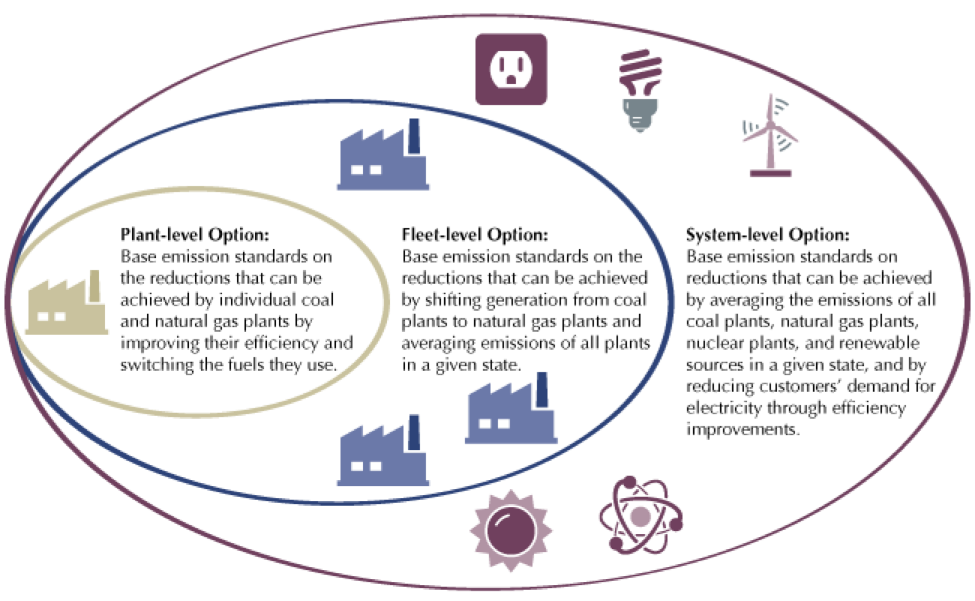2. How much flexibility will states have?
Quite a bit. States can use any of the four building blocks listed above to achieve emission reductions in whatever combination each state sees fit. States have a variety of policy options under each of the building blocks. Additionally, states will have the option to join together in multi-state initiatives to pursue cuts in cooperation, for example through a regional cap-and-trade program. Other policy options include:
- Energy efficiency programs
- Appliance efficiency standards
- Building efficiency standard
- Clean/renewable energy standards
- Power plant performance standards
Moreover, the proposal encourages state innovation, noting that states can propose programs not specifically identified by EPA.
3. Will the proposal account for regional variation in generation mix?
As noted on our previous post on this topic, current state power sector emissions vary widely due to differences in population, generation mix, industry distribution, climate, policy landscape, and other factors. To account for this, EPA has proposed a unique emissions baseline for each state based on its fossil-fired power plant emissions divided by its total generation, which includes fossil generation, zero-carbon generation through renewables and nuclear energy, plus generation avoided through energy efficiency programs. EPA then calculates a unique target emission rate (lbs CO2 per megawatt-hour) for each state based on its projected capacity to leverage each of the four building blocks.
4. How smoothly will existing state programs be integrated?
It appears as though EPA has gone to great lengths to intimately understand the policies states are already using to reduce CO2 emissions in the power sector. By setting a baseline that accounts for existing state action, EPA is allowing programs already in place to count toward state targets.
What’s next?
EPA and states still have many major hurdles to overcome before new carbon-cutting programs will actually be put in force. The next phase will be a public comment period, during which states, power companies, and other stakeholders will submit comments to EPA about changes they’d like to see in the proposal.
In June 2015, EPA is expected to finalize the rule. After this, states will have until June 2016 to propose plans to EPA on how they will implement the standards, although a one-year extension is available. Once a plan is submitted, EPA will have a year to determine if it is acceptable and can go into force or needs revision. EPA has the authority to impose a federal plan in cases where no adequate state plan is submitted.
Although there are many challenges before carbon-cutting programs will be put in effect under the Clean Power Plan, EPA’s proposal today represents a very promising step toward a lower-carbon power system.

